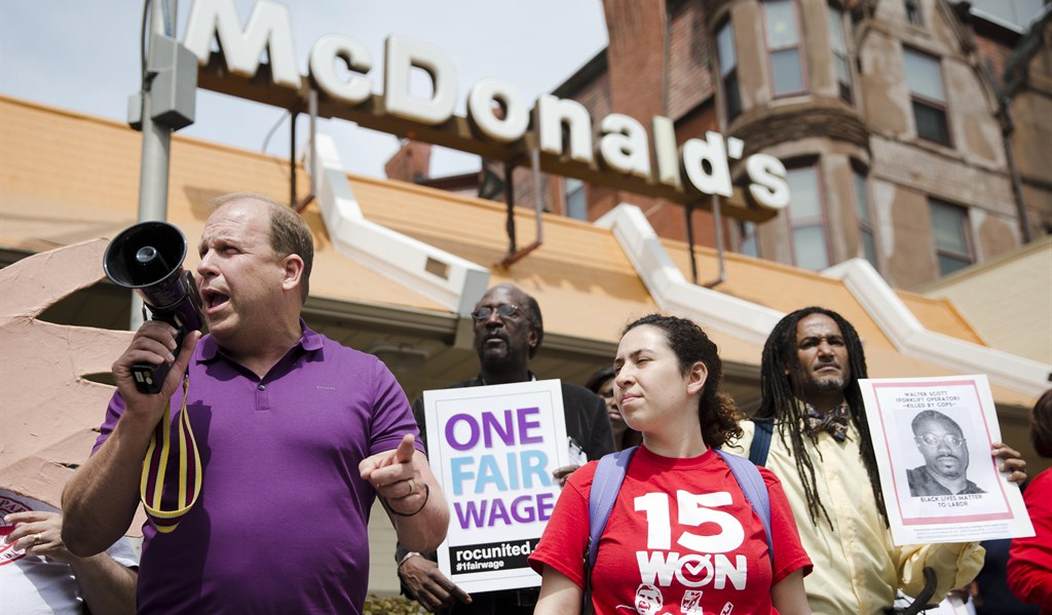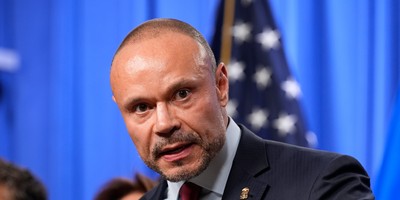Don’t expect any miracles from the economy. But don’t expect a collapse either.
In political terms, it’s kind of a Mexican standoff. Team Obama says they saved us from another Great Depression. And they point out that 3.1 million jobs have been created in the last 12 months. Republicans counter that this is the slowest post-WWII recovery on record and that real GDP is roughly $2 trillion below potential. They add that the labor-force participation rate is 62.7 percent, a 39-year low, and that there are at least 15 million people who work but can’t get jobs.
Yet both sides may actually come together for a major pro-growth initiative: an Asia-Pacific free-trade deal that will lower tariffs and other barriers. Lower tariffs are lower taxes.
Democratic labor unions don’t like this. Neither do isolationist Republicans. They both think American wages and jobs will be damaged. But as House Ways and Means chair Paul Ryan argues, free trade is a positive sum -- both sides benefit -- not a zero sum.
Export-related jobs typically create higher wages. And one-in-five American jobs depend on trade. Moreover, the spread of market capitalism and free trade in China, India, Vietnam, South America, and parts of Africa has lowered dollar-a-day abject poverty by 80 percent over the past three decades. (Pope Francis, take note.) And with hundreds of millions of people entering the global middle class, America’s low-cost producers are seeing their markets expand.
Of course, a strong corporate tax cut, on a territorial basis, with easy repatriation of overseas profits, would give U.S. businesses large and small even lower costs and greater competitiveness. But the corporate tax cut is not going to happen -- at least until after the 2016 election.
So we’re left with a trade deal that may well happen. President Obama is working with Republicans to persuade Democrats to come on board with trade. Obama deserves credit.
Recommended
Meanwhile, back to the economy, real-GDP (RGDP) growth was barely above water at 0.2 percent in the first quarter. Bad winter weather undoubtedly played a roll. But consider this: A year ago we had a decline in economic growth of 2 percent -- again, largely due to the weather -- but the next two quarters rebounded by nearly 5 percent.
So if you look at four-quarter trends for perspective, RGDP actually rose 3 percent over the past year. And business investment increased nearly 5 percent, despite a big cutback in energy-company capex.
In addition, exports over the past year increased 3 percent and imports 5.5 percent. People keep telling me the strong dollar is killing our exports. But they forget two things: King Dollar has led to across-the-board price drops, boosting consumer and business real incomes. And if exports keep slowing, blame the lack of production out of Europe, China, Japan, and elsewhere.
And you can’t overlook the very core of the American economy: private consumption plus private investment (C + I). It’s been rising at roughly 3.3 percent year over year for the past several quarters. Not bad. And profits and stock markets hover near record highs.
Then there’s the most underrated factor in today’s economy: zero inflation. This is totally pro-growth. It’s a tax cut.
The Fed’s monetary machinations haven’t worked. The M2 money supply has hovered around 6 percent for years, with nominal GDP (NGDP) around 4 percent. The monetarist experiment went nowhere. And that’s a good thing, as excess bank reserves never circulated through the economy and the velocity (turnover) of money continues to fall. But the strong greenback is holding prices down, including energy. Gold prices have been stable for years.
So NGDP at 4 percent with zero inflation leaves room for 4 percent real growth. It’s a good spot for the economy. But if the Fed had its way and raised inflation to 2 percent, RGDP might be crowed out to 2 percent or less. Why do we want that?
Paul Volcker used to argue that low inflation increases real growth. He was right. But Ben Bernanke and Janet Yellen argue that higher inflation increases real growth. They are wrong.
American economic growth has fallen way behind its long-term performance trend. Instead of 2 percent growth we need 4 or 5 percent.
This leads me to a final thought: It was Arthur Laffer and Robert Mundell who created the ultimate pro-growth mix of monetary and fiscal policy. Keep the dollar sound for price stability and reduce marginal tax rates to rejuvenate supply-side incentives. That mix worked in the JFK 1960s and in the Reagan-Clinton 1980s and 1990s. Add in a strong dose of free trade and deregulation, and the Laffer-Mundell hypothesis will return us to our long-term economic path and renew American leadership worldwide.
Question is, will the GOP take that growth model and run with it?























Join the conversation as a VIP Member